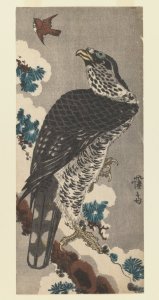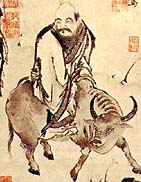“To see things in the seed, that is genius.” Lao Tzu
In its simplest sense an advocacy campaign is a methodical, strategic effort to convince a decision-maker to make a specific decision by a certain deadline. It involves a campaign goal (as described above), strategic objectives, development of tactics and anticipated outcomes, campaign protocols, policies, systems and metrics.
In teaching some of the tricks and tools of the trade that I have developed and picked up over twenty years of organizing work, I often start by taking a step back, before delving into those somewhat technical details, with a philosophical approach that, for me, frames how I set out to develop and implement successful advocacy campaigns.
Campaigns need to be developed, planned, staffed and managed well, and doing all that requires both skill and art. So I start my workshops with talking a bit about the art. For this I turn to the wisdom of thinkers like Sun Tzu, whose seminal The Art of War remains on the reading list of many strategists and the more mystical Lao Tzu, legendary author of the Tao Te Ching.
Some of the art is an innate ability—different people, thankfully, are adept at different things—but a lot is also gained from experience and practice. And I find these two ancient thinkers from China very relevant for providing both a simple and profound understanding about how campaigns function, and how the successful advocate operates within them.
“When torrential water tosses boulders, it is because of its momentum. When the strike of a hawk breaks the body of its prey, it is because of timing.” Sun Tzu
Campaigns are dynamic things, not static (although they do need solid structure and efficient systems). Campaigns of any duration include an ebb and flow, a cyclical not linear force (even though they are imposed on a set timeline). Campaigns are implemented by successful, adept advocates. And, finally, campaigns require balance between strategic vision and tactical action, with those informing the other, finding success in the proper function between those polarities. 
It would not end well for a hawk that tried to roll a boulder by striking it, and a rabbit would simply move out of the way of a flood rolling boulders down an arroyo. Rather in both the hawk’s strike and the torrential waters, it is the application of proper tactics informed by correct strategic objectives, that allow the rabbit to be gotten and the boulder to be moved.
“Strategy without tactics is the slowest route to victory. Tactics without strategy is the noise before defeat.” Sun Tzu
The material presented in the Art of Advocacy goes into some detail with four ‘virtues’ or qualities of the functional campaign, five ‘attitudes’ or level of engagement of the successful advocate, and four progressions the functional campaign moves through between strategic vision and effective action (and back again).
The Art of Advocacy workshop fits into a larger system of campaign development that teaches how to craft plans covering the goal, strategies and objectives, and includes a ‘hands on’ training in the development of effective tactics.
This framework provides the basis for that later work. For instance, the four virtues of a functional campaign are a key part of the system, with each serving a specific role within the campaign.
Four Virtues Campaign role
Perspective ‘Strategic vision’
Awareness ‘Tactical vision’
Adaptability ‘Tactical action’
Steadfastness ‘Strategic action’
>> Proper Function
The takeaway is that advocacy campaigns are dynamic with a cyclical and not only linear force at play, and which require a balance between strategic vision and tactical action.
The final, and probably most important, lesson is that successful campaigns are implemented by successful advocates. As the basis for advocacy campaigning, the wisdom of both Sun Tzu and Lao Tzu coach us to look within: to be an effective advocate for change one must strive to be that change, as another great strategist also reminded more recently.
“You must be the change you wish to see in the world.” Gandhi
Of course campaigns are designed to win. Within the bounds of ethics and appropriateness the model that works is the one to pursue. But since there is more to winning than just putting together a good plan, an understanding of the ‘art’ of advocacy is also an important step to crafting and running winning strategies and tactics.
That is why in starting my trainings I like to start long ago and far away, to make the ‘Art of Advocacy’ relevant today by borrowing from philosophers in feudal China. Success starts with certain qualities and attitudes that can be cultivated, in both the campaign and in ourselves as advocates.
Crafting campaign strategies and tactics can seem like a technical and dry process, but its genesis for ultimate success starts by ‘seeing things in the seed’ and a basic understanding–about the work we are doing and about ourselves–that moves our efforts toward effectiveness and success.
Advocacy Campaign Workshops
This post is developed from background materials for a recently introduced series of workshops to teach theory, skills and techniques behind successful advocacy campaigns.
Current workshops being offered include:
- The Art of Advocacy: Finding the Way to the Winning Campaign — a framework for understanding what makes an effective advocacy campaign
- Overview to Campaign Development — covering the ‘nuts and bolts’ steps taken to assess the situation and craft a campaign plan
- Crafting the Winning Campaign — hands on training and practice in campaign development, including campaign assessment and crafting a plan
For more information on workshops, contact Mountain West Strategies at 970-510-0678.



Comments are closed.